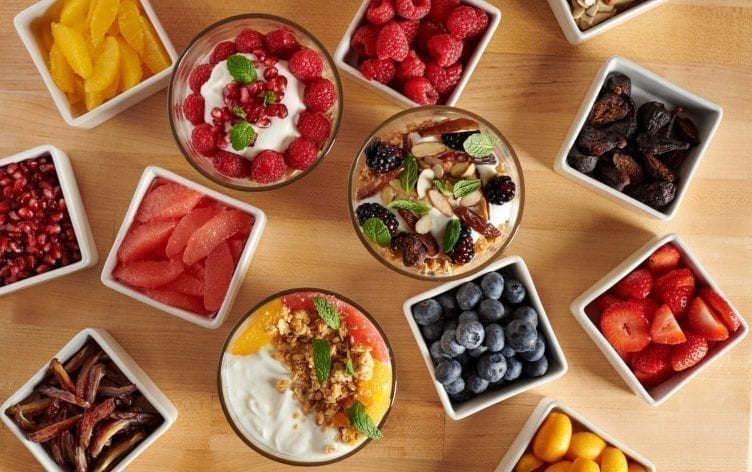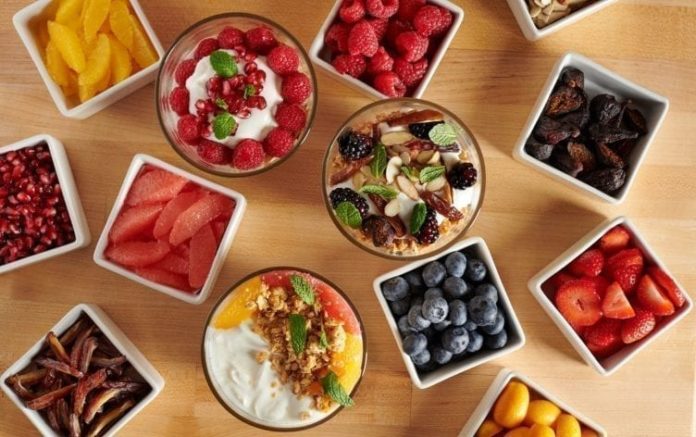
Ask the RD: How Much Fruit Is Too Much?

When trying to lose weight or manage insulin resistance, you may think it’s important to avoid any type of sugar. However, unlike sodas, candy and other highly concentrated forms of sugar, naturally occurring sugar found in fruit has been linked to decreased chances of obesity and other metabolic diseases. The caveat here is that it has to be consumed in its whole-food form, not juiced or dried (for example, an apple with the skin-on.)
WHY CONSUMING FRUIT WHOLE IS BEST
When consumed whole, you get the whole package, which includes two types of fiber: soluble and insoluble. These fibers weave and work together to form a barrier (or “fiber lattice”) in the small intestine that dramatically slows the rate of sugar absorption, so you don’t get spikes that can cause insulin resistance and diabetes. Instead, most of the sugar travels into the lower part of the small intestine where the majority of our gut bacteria and microbiome is housed. Here, the bacteria have a chance to eat and metabolize most of the sugar from the fruit.
Moreover, most whole fruits are low on the glycemic index (GI), a system that ranks foods according to how they affect blood glucose. (Note: Lower is better on this scale.) Foods with a higher GI tend to cause a stronger, more immediate rise in blood glucose after eating. A higher blood-glucose level means your body works harder and longer to produce insulin, leading to a more likely change for insulin resistance over time.
Finally, fruit sugars as part of the whole fruit also come packaged with high levels of vitamins, minerals and antioxidants. A diet rich in antioxidants can help improve insulin resistance.
WHY YOU SHOULD AVOID FRUIT IN OTHER FORMS
As for fruit juices and smoothies, these are hyper-concentrated in fruit sugars and may not be as effective in creating the same “fiber lattice” in the gut. Machines like blenders and juicers begin to break down and shred the cell walls and insoluble fibers necessary to form the lattice. Plus, you’ll eat whole fruits at a much slower pace (and consume less overall) than you might when slurping down a smoothie.
THE BOTTOM LINE
There’s no need to worry about eating too much fruit as long as it’s whole and included as part of a balanced diet that also focuses on lean proteins, whole grains and lots of veggies. In fact, most Americans aren’t eating enough fruits and vegetables, so it’s important to aim to fill half of your plate with a variety of fruits and vegetables.
If you struggle with insulin resistance, focus on fruits higher in fiber and lower on the sugar scale, like berries (blueberries, strawberries, blackberries, raspberries), grapefruit, pomegranate and apples (just be sure to eat the peel, which contains most of the fiber.)
Even better: Pair your fruit with a nut butter, like almond or peanut butter, which adds satiating protein and fat to keep you full longer.



















